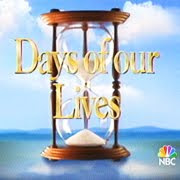It goes by many monikers: HTTP 404, 404 not found, 404 error, page not found, file not found. All of it refers to content that has been erased, moved, renamed, or otherwise missing from where it used to be.
The service is sold as a win-win because most site owners don’t like broken links. But it isn’t a win-win because the new connection can never capture the source material the author linked to 15 years ago. So mostly, bloggers and journalists ignore those requests and let the 404 stand. Or, if they are actively managing their content, they will look for a better-suited link.
As for the lost source material, it’s anybody’s guess what happened. While site redesigns can move things around, destination 404 is more often the result of dead content. When blogs and magazines die, they leave Swiss cheese-like holes of nothingness. When bands break up, publishers give up on books, or writers decide they don’t like an article anymore — it’s all destined to become 404. So much for dreams of immortality. Digital data is temporary.
The Internet is awash in dead service providers.
Of course, this explanation only addresses 404 on a small scale. The truth is that the Internet is awash in dead social networks and content services. When one of them goes by the wayside, they take thousands of accounts and hundreds of thousands of content creation with them.
I’ve known it for a while now. Geoff Livingston and I hosted a series of communication columns on a platform called Bumpzee in 2007. We called the series “BlogStraightTalk” and billed it as a weekly discussion on the best and worst of blogging content practices, presented in a contrarian format (e.g., Ebert & Roper or Kornheiser & Wilbon).
When Bumpzee folded, so did BlogStraightTalk. Error 404. Bumpzee wasn’t the only one. Geoff sold his first blog, The Buzz Bin. Blogcatalog, which was once a prominent social network for bloggers, is long gone. So is RecruitingBloggers, which I mentioned in the article.
There are other examples too. A platform that grew out of Blogcatalog had its day too. BloggersUnite used to promote social causes and did well enough to attract the interest of CNN and the Wall Street Journal. One campaign even changed foreign policy in Darfur, Sudan (2008). Today, there are only hints that such a campaign occurred, fragmented content surrounded by 404 emptiness.
These examples are just the tip of the iceberg. FriendFeed is gone. iTunes Ping dead. Google Wave, Google Buzz, Google+ are barely remembered. Friendster, Vine, Utterz, and Merrkat. MySpace is still around, but not most of the content that once made it a major social player. Technorati, too, which was a blog search and ranking site that most early bloggers relied on, left us in a lurch sometime in 2014 (if you can Digg it). The Internet is littered with the ghosts of a past no one really cares about — and that may include your content too. It certainly includes mine.
One unfair decision by a social network can cost all your content.
A few days ago, I noticed my Facebook account acting a little wonky. I didn’t overthink it. Wonky is par for the course.
Eventually, the wonkiness turned into something a little more than an inconvenience. Facebook had disabled my account, turning years of memories into 404 content. It didn’t just happen to my account. It happened to everyone’s account I know — every share, tag, or comment I ever made was erased. If I wished you happy birthday, you won’t find it. No warning. No appeal.
And if that wasn’t damaging enough, every page I was listed as a solo admin on was taken down with it — including an author page with 1,400 followers and two nonprofit softball pages. I have another page for Liquid [Hip] that I cannot access. It was spared being shut down because there were two admins listed. Unfortunately, the other admin has been awol for four years now, so I cannot access it. I’ll explore how to salvage the page when I take care of bigger issues.
So what happened? It’s a question I get pretty often now. The short version is this: I provided consultation to a few Facebook groups last year, gratis. When a family emergency involving my grandmother distracted me, I forgot all about those groups (and plenty of other unimportant things). Unfortunately, these groups went sideways over the last six months (some people even claim sabotage), and Facebook decided to take the groups down.
Anyone listed as a moderator saw their accounts restricted. Anyone listed as an admin, which included me, saw their accounts disabled. No warning. No appeal. Ironically, I almost left those groups a few weeks ago, but my family had tested positive for Covid. Then we had to travel to southern Arizona to clean out my grandmother’s property. You know. Real-life priorities.
I was fortunate in that I could revive an old account that had been dormant for more than a decade. And now, I am in the process of rebuilding everything that was lost while providing my friends and colleges a cautionary tale.
Your content exists at the whim of whatever network you use. Facebook can delete everything you’ve ever written, shared, or contributed to. Everyone you are connected with will be affected. They just won’t know it. The only evidence that something is missing will be lost in the lack of some reminder that used to pop up from time to time. Those reminders won’t happen.
There is a bright side, but only because I choose to see one.
When I joined Facebook in 2007, I did so at the urging of fans from a canceled television show called Jericho. So I joined reluctantly and set up Facebook to repost my tweets for lack of having better content. Of course, as Facebook evolved, so did my content and connections in a sprawling, haphazard way — leading to an account with thousands of people I didn’t know.
While I know hundreds of people, adding them back has placed friends and family first, which has changed my feed for the better. I also have a clean slate to work with and will remake my account with almost 15 years of experience none of us had when Facebook first hijacked our social connections.
I won’t be penny smart and pound foolish either. Losing my account cost me scores of personal quips and family stories that I shared about my kids growing up. Those are all gone now. So, I won’t leave anything to chance. Copy any content that matters to you from time to time. You are the only one who cares about it. Facebook certainly doesn’t care about it.
I already knew this to be the case. Facebook used to sport a feature called stories, where I used to store longer short stories. Then one day, Facebook decided to put that feature on ice. While they did provide a little warning it would happen, a little notice doesn’t fix all the broken links associated with content removal. Lesson learned then. Lesson learned again.
Here are two more takeaways that might spare you some future heartache. 1. Always have multiple active admins on every page you manage. If Facebook targets one admin, the other admins should be able to preserve the page. 2. All those advertising dollars you invested in your page are only as good as the service provider, which means marketing there is a necessary evil with no real value. My author page grew to 1,400 followers because of great content, hard work, and smart ad campaigns. The network erased it in an instant. Oh well.
If you would like to help me restore my author page on Facebook, please like or follow it today. I am only weeks away from publishing my first book, a collection of short, short stories. Facebook will be one of the places I intend to promote it as long as possible (or you can subscribe to my future newsletter). Along with book updates, I will share more first draft short stories there, curate author-related content, and post progress on some other exciting projects from time to time. I really do hope to see you there. It’s already growing again.
Goodnight and good luck.







































